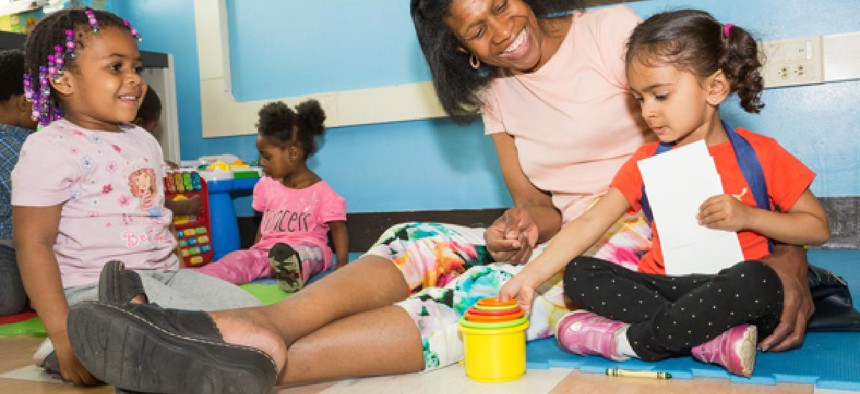Front-Line Hero: Noelene Smith, The Baby Institute

Thirty million is the number of words a child should be exposed to by the age of three to help guarantee future success for the average child entering pre-K. Research shows that without that exposure, a persistent achievement gap can develop. Noelene Smith, founder and executive director of the Baby Institute, is working to make sure the families who attend her Albany-based Baby Institute have the tools to meet that milestone – and then some.
With Albany High School’s average graduation rate coming in at below 60 percent – compared with 87 percent for the rest of New York State – Smith sensed a need to attack the problem urgently, and at its roots.
“My three daughters looked like the other kids at (Albany High School), and they’re all college graduates,” said Jamaica-born Smith, MSW. The school has a primarily African-American student body. But by second grade Smith saw teachers giving up on her children’s classmates who were not yet reading at grade level.
All the students had started out on a level playing field, she observed, but with one big difference: “My kids had me.”
With literacy ever more important in today’s digital age, Smith determined to ‘move the dial’ by demonstrating to parents how to turn their children into ‘lifelong learners.’ “Once a child falls behind, you can’t catch them up,” she said. “The parents I help don’t know what they don’t know. Our program demonstrates how to act as your child’s first teacher by reading aloud and engaging from infancy.”
Active in the Albany community since the 1980s, Smith established the Baby Institute in 2010 after studying models such as the Harlem Children’s Zone. Her free, nine-week workshops take place on Saturdays three times a year. To date, about 400 parents have graduated from the program which offers advice on nutrition and health in addition to tips on preparing for school readiness. The summer program, which provides free childcare, fills up overnight.
“Anywhere I see a mom pushing a stroller or a pregnant woman, I approach and invite her to attend,” said Smith, who finds many of her clients at the office of the Department of Social Services. The fact that eight of 10 people turn her down doesn’t discourage her from her mission. She wants the Baby Institute to help raise the graduation rate at Albany High to the state average.
Recently, she’s gained a high-powered partner to help her with that goal. After five years of operating with a few small grants and a core of volunteers, this year the Baby Institute made local headlines when Albany Medical Center pledged a four-year partnership, including $175,000 in financial support during the first year, to help grow the fledgling 501(c)(3). This welcome commitment means she and an assistant can work full time and grow the program to include a public health component.
For parents who work weekends, she is preparing to launch a weekday workshop and double the number of nine-week sessions to six annually. Thanks to a permanent address granted by the Albany Housing Authority, and increased outreach through their brand new newsletter, the Baby Institute is also poised to increase enrollment from three Albany neighborhoods they serve: Arbor Hill, West Hill and the South End. The Baby Institute’s donation shop expects to grow as well. It works on a barter system where parents who attend workshops receive tokens that can be exchanged for whatever goods are on hand.
“Once we take in a family we are committed to the kids and will advocate whenever necessary,” she said. From helping to find a speech therapist to applying for financial aid for college, Smith is available. But she draws the line at financial problems. “I’m not a crisis manager, or a friend,” said this longtime social worker. “My job is to refer our parents and give them the tools to deal with their issues.”
Hopefully, that will mean more transformations like this one: “One 4 year old who arrived at our program had never held a pencil or a crayon before,” Smith recalled. “ After 3 weeks with us she picked up so quickly, we sent (what seemed to be) a different child to school. That’s the result of our model, working one child at a time.”
